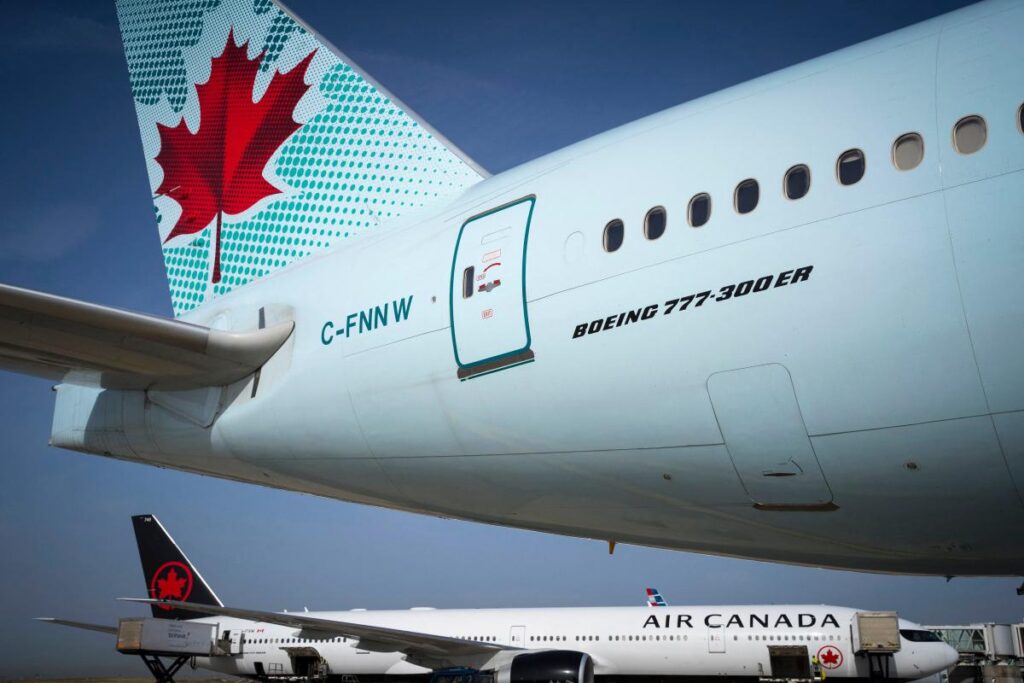A recent incident on an Air Canada flight gained attention after a severe bout of turbulence caused food and drinks to spill throughout the cabin, even splattering onto the ceiling of the aircraft. This occurred during Flight AC19, which had taken off from Vancouver en route to Singapore on a Boeing 787-9 Dreamliner. According to a passengers’ account shared on Reddit, the flight encountered “major bumps” approximately three hours into the long journey, resulting in chaos as items were sent flying and, reportedly, a few passengers lost their footing. The turbulence reportedly lasted for about four to seven minutes, characterized by a significant drop in altitude that caught many off guard. Despite the chaotic scene, the airline confirmed that the flight landed safely, albeit 26 minutes later than scheduled, with no injuries reported.
Following the incident, an Air Canada representative acknowledged that the turbulence experienced by Flight AC19 was an unfortunate event. The airline emphasized that all necessary safety protocols were followed, including a mandatory full inspection of the aircraft after its landing. Fortunately, the aircraft has since returned to service. Passenger assistance during the aftermath demonstrated a collective spirit, as individuals helped the flight attendants clean up the mess, and those who found their seats wet were provided with tablecloths to sit on until the situation was resolved.
The turbulence-related incidents are not isolated occurrences, as they highlight a concerning trend in aviation safety. Earlier this year, a Singapore Airlines flight had to deal with severe turbulence that resulted in injuries to around 30 passengers, and in another event, a passenger was reported dead on that flight, though it’s unclear whether it was related to the turbulence. Additionally, a recent United Airlines flight from Cancún to Chicago encountered severe turbulence that resulted in injuries as well. Such incidents raise questions and evoke fears regarding flight safety, with passengers often feeling uneasy about the potential risks associated with turbulence during their flights.
Research indicates that turbulence is, in fact, becoming more common and severe, and climate change has been identified as a contributing factor. While the probability of encountering the most extreme forms of turbulence remains low, incidents do still occur, leading to discussions on safety measures that passengers should take to protect themselves. Experts advise that passengers should remain buckled in their seats at all times, even when the seatbelt sign is turned off. This precaution is especially valuable because clear air turbulence, which can appear suddenly and without warning, is the type most likely to lead to injuries, primarily because people are less likely to be secured during such instances.
Thomas Guinn, chair of applied aviation sciences at Embry-Riddle Aeronautical University, has repeatedly emphasized the importance of wearing seat belts during flights. According to Guinn, being buckled in significantly lowers the risk of injury during turbulence situations. He dispels some of the myths surrounding turbulence, reminding passengers that aircraft are engineered to withstand adverse weather and turbulent conditions. However, remaining securely fastened is crucial, given the unpredictable nature of turbulence, particularly as air traffic increases and patterns change.
In conclusion, the incident on Air Canada Flight AC19 serves as a proof of the turbulence that modern air travel can experience, highlighting the importance of passenger preparedness and adherence to safety protocols. Learning from these instances can foster understanding among travelers regarding the nature of turbulence, while also prompting ongoing dialogue about aviation safety and the implications of climate change on flying conditions. Safety measures and recommendations by experts will remain essential in ensuring passenger well-being amid the evolving dynamics of air travel.

